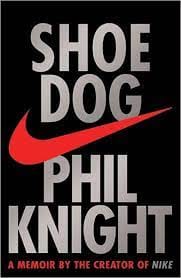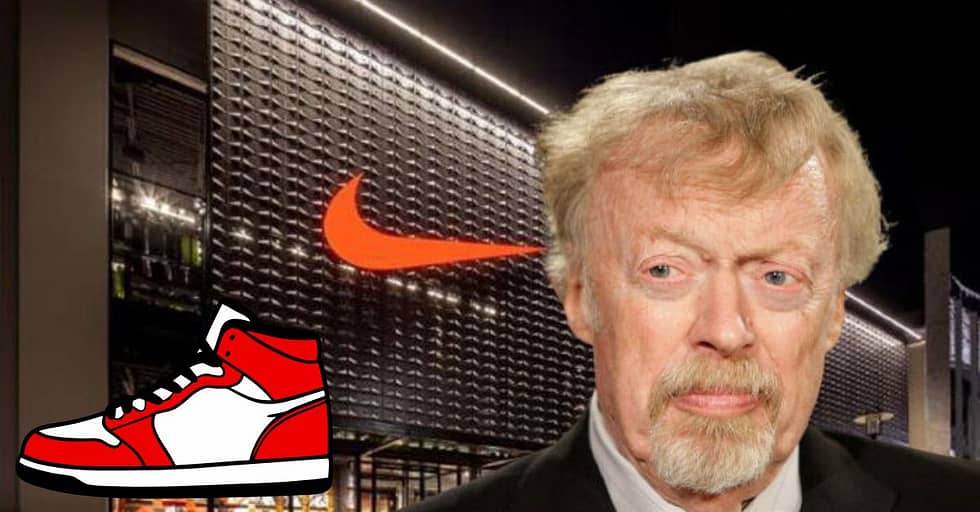In 1964, Phil Knight started selling imported high-quality, affordable athletic shoes out of his car. He earned $8,000 in his first year. In 2015, Nike earned $30.6 billion. And in April 2016, Phil Knight published his memoir, Shoe Dog, in which he wrote with humour and honesty about the trials and tribulations he – and Nike – faced over that half-century.

Shoe Dog by Phil Knight is an excellent read for any entrepreneur
Shoe Dog is an extremely well-written memoir, an absorbing story full of interesting, eccentric characters and exciting twists. But it also contains plenty of lessons for the entrepreneur. If you are looking for inspiration, motivation and reassurance as you grow your business, I highly recommend you add Shoe Dog to your personal library. I have found it an excellent resource on my own entrepreneurial journey.
Here are eight entrepreneurship lessons I got from Phil Knight’s story.
1. Sometimes, you just have to jump.
At its core, entrepreneurship is a leap of faith. Not all ideas will work out. Evaluate them objectively, discuss with experts, make a plan. But a day will come when you have to stop thinking and take that first step. As Nike’s tagline says, ‘Just do it.’
2. Every day brings its own crisis.
Problems come up all the time – from competitors to new technology, from regulations to finance, from supply issues to weather conditions. The problems of maturing companies are different from those of start-ups. But there’s never a time when all the problems disappear. Accept this and face each challenge with courage.
3. Keep innovating.
Bill Bowerman, an eminent running coach and part of Nike’s story from the time it was still Blue Ribbon Sports, figured out how to reduce the weight of a shoe by one ounce, saving 55 pounds over a mile. That philosophy of iterative improvement has driven Nike ever since. As the pace of technology development gets ever more feverish, embedding the innovative mindset in the DNA of the company is essential to stand out from the competition.
4. Trust is the key.
Five interrelated factors cause a company to lose its way: lack of trust; fear of conflict; lack of commitment; avoidance of accountability; and inattention to results. Entrepreneurship is full of uncertainty. A team that believes in the vision and faces these challenges unitedly is vital to come out of the tough situations. It isn’t that everyone in the company agrees about everything; rather, it is that everyone knows that they all want the company to succeed and views their disagreements in that light. When a company is young and fragile, trust is the glue that holds it together.
5. Failures will happen. Be honest when they do
Knight gives multiple instances of product recalls due to quality issues, mistakes that he made and decisions that, with the benefit of hindsight, could have been better. Nike treated their customers with respect by acknowledging errors, both internally and in public. Nobody is perfect, but when the internal culture of trust is matched by honesty to customers, the circle of trust can buoy a company through some very tough times.
6. Stay humble
One interesting fact is that it was Employee No. 1, Jeff Johnson, who came up with the name ‘Nike’. Throughout the book, Knight praises Johnson, Bowerman, legal counsel Rob Strasser, first COO Bob Woodell and many others, including his wife. Knight rarely mentions his own contributions once the company is more than just a car boot shoe sale. But he was the CEO – how likely is it that he didn’t contribute anything? It’s not an accident that Knight plays down his own role. He knows that success, like sports, is a team effort – and he never forgets to show appreciation for his teammates.
7. Find an outlet for the stress.
Entrepreneurship is demanding. Because the problems never stop coming, you will be tempted to never stop working. But you can’t look after your business if you aren’t around or aren’t in good health. An activity unrelated to work is an excellent way to get a clear, fresh perspective on seemingly insoluble issues. Phil Knight loved running, and running was his outlet. By finding a relief valve and paying attention to your own physical and mental health, you can be energized to keep going, no matter what.
8. Never stop.
For almost the first decade of Nike’s existence, Knight had to work other jobs to support himself. Suppliers ignored or shot down the company’s product ideas. Its first attempt to raise capital was a monumental failure. Advertising flyers got no response. But the team didn’t give up. As an entrepreneur, it’s easy to get disheartened. But if there’s one lesson from Shoe Dog that every entrepreneur should hold on to, it’s this: never stop.
Let everyone else call your idea crazy…just keep going. Don’t stop. Don’t even think about stopping until you get there, and don’t give much thought to where “there” is. Whatever comes, just don’t stop.
-Phil Knight, ‘Shoe Dog’



